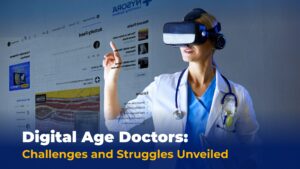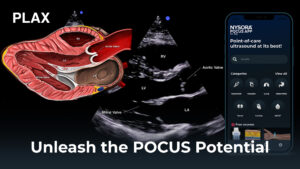Explore NYSORA knowledge base for free:

Imagine if your digital marketing initiatives could reach over 700,000 global healthcare professionals annually with your innovative solutions! NYSORA, the leading educational organization in Anesthesiology, ICU, Nursing – IV Infusion Therapy, and Pain Management, is uniquely positioned to make this a reality. Our Expanding Influence Over the past few years, NYSORA has scaled its educational footprint to become the leading educational organization in all of Anesthesiology, Pain & Perioperative Medicine, Nursing IV Therapy and growing into ICU and ED. With over 10 best selling textbooks (NYSORA BOOKS) and more in planning. NYSORA is now also the largest community of professionals in these therapeutic areas—boasting a reach several times larger than all anesthesia and pain societies combined. For example, NYSORA’s YouTube channel has 230,000 subscribers and garners over 20 million views annually, unmatched by any similar professional medical organization. Recognizing our immense reach and daily impact on anesthesiology, pain, perioperative medicine, and nursing education, NYSORA is now opening the door for industry partnerships in education. Why Partner with NYSORA? Massive Reach & Visibility Website Traffic: 10 million annual visitors to com—healthcare professionals eager for clinical insights. Social & YouTube: Over 500,000 community members across social platforms, including 230,000 YouTube subscribers with over 20 million views annually. Influential Newsletter and Podcast: More than 210,000 subscribers receive bi-weekly updates on Anesthesiology, ICU, Pain, and Perioperative Medicine {Podcasts – NYSORA}. High Brand Trust & Engagement NYSORA’s audience deeply trusts NYSORA’s recommendations, making our platform ideal for showcasing innovative solutions—from white papers on new technologies to co-branded educational content. Direct Access to Healthcare Professionals and Instant Market Research Live Workshops: We host over 80 annual live workshops, providing hands-on opportunities for product demonstrations and direct clinician engagement. Sponsored Educational Content: Collaborate with us to co-create articles, videos, or webinars that highlight your devices and services. […]

In this insightful exploration, we delve into the underappreciated struggles and challenges that doctors face in the high-pressure medical field, further amplified in today’s digitally connected era. Doctors face significant challenges due to the rigors of their profession. The path to becoming a doctor requires years of intensive study and training, including undergraduate education, medical school, and residency. This prolonged period often leads to substantial stress, potentially triggering various physical and mental health issues. Once established in their careers, doctors contend with demanding, irregular schedules, marked by long hours and on-call shifts. They operate under intense pressure, often making life-or-death decisions, contributing to high-stress levels and the risk of burnout. The workload can leave them with little time for self-care activities such as exercise, proper nutrition, or adequate sleep, paving the way for health issues such as obesity, heart disease, high cholesterol, and other chronic conditions. Balancing work and personal life is another significant hurdle for doctors. The relentless work schedule often infringes on family time and personal interests, leading to emotional stress and strained relationships, impacting their mental health. Financial stress is another burden, particularly for those starting their careers. The high cost of medical education frequently results in substantial student loan debt. In contrast to peers who joined the workforce directly after high school or college, doctors often face a longer journey to financial stability, adding to their stress levels. Even though they are healthcare professionals, doctors often find it hard to prioritize their own health checkups and preventive care. This can result in delayed diagnosis and treatment of potential health issues. The digital age, while offering several conveniences, presents additional challenges for doctors. Online training, digital compliance, and electronic medical record systems, while streamlining some aspects, add to their workload. Digital advancements have blurred the lines between […]

We recently sat with Dr. Van Herreweghe – Dr. Ray – to discuss POCUS as the increasingly popular diagnostic tool that enables doctors to quickly and accurately diagnose various conditions at the patient’s bedside. This week, we continue the conversation on the app we designed together to empower healthcare professionals with advanced guidance on POCUS wherever they go. What makes this app different from the rest of the solutions on the market? Simply put, it’s a step-by-step, easy-to-digest guide to scanning in your medical practice. While many apps are primarily designed for professionals already well-versed in Point-of-Care Ultrasound (POCUS), we have expanded our scope to cater to beginners aiming to engage with POCUS as well. Consequently, our app provides an easily digestible, step-by-step guide to navigating the complexities of scanning. Additionally, our app includes the coveted NYSORA illustrations, animations, and comparisons between sonoanatomy and reverse ultrasound anatomy, elements that significantly aid in the learning process and understanding. This holistic combination makes our app uniquely equipped to serve a broad spectrum of users, from novices to seasoned professionals. How did you create the curriculum? The market lacks a standardized pathway for mastering Point-of-Care Ultrasound (POCUS), with recommendations varying widely across different societies. Drawing on our extensive experience in regional anesthesia, we saw a dire need to establish a more structured, evidence-based approach to learning POCUS. As a result, we’ve developed a curriculum that leverages scientifically grounded educational tools, aiming to provide a consistent and effective learning journey for POCUS mastery. This standardized methodology sets us apart, as we strive to fill the gaps left by current market offerings. The resulting curriculum is designed to cater to a broad spectrum of medical professionals, including critical care physicians, emergency physicians, anesthesiologists, internists, and those from numerous other disciplines seeking to enhance their clinical […]